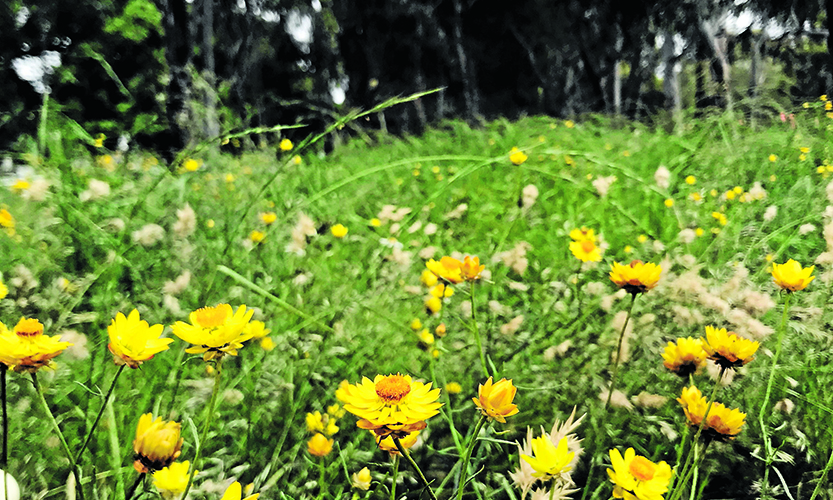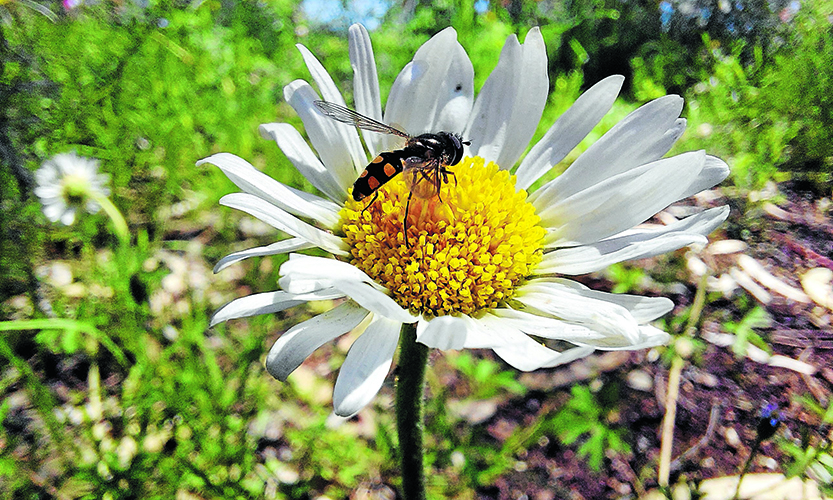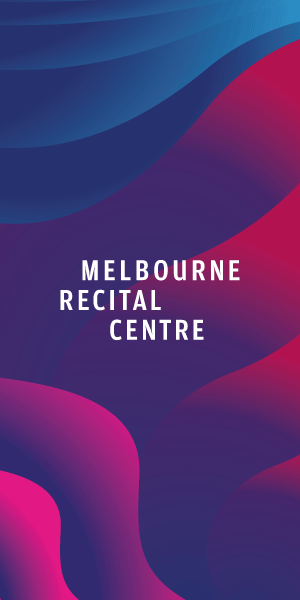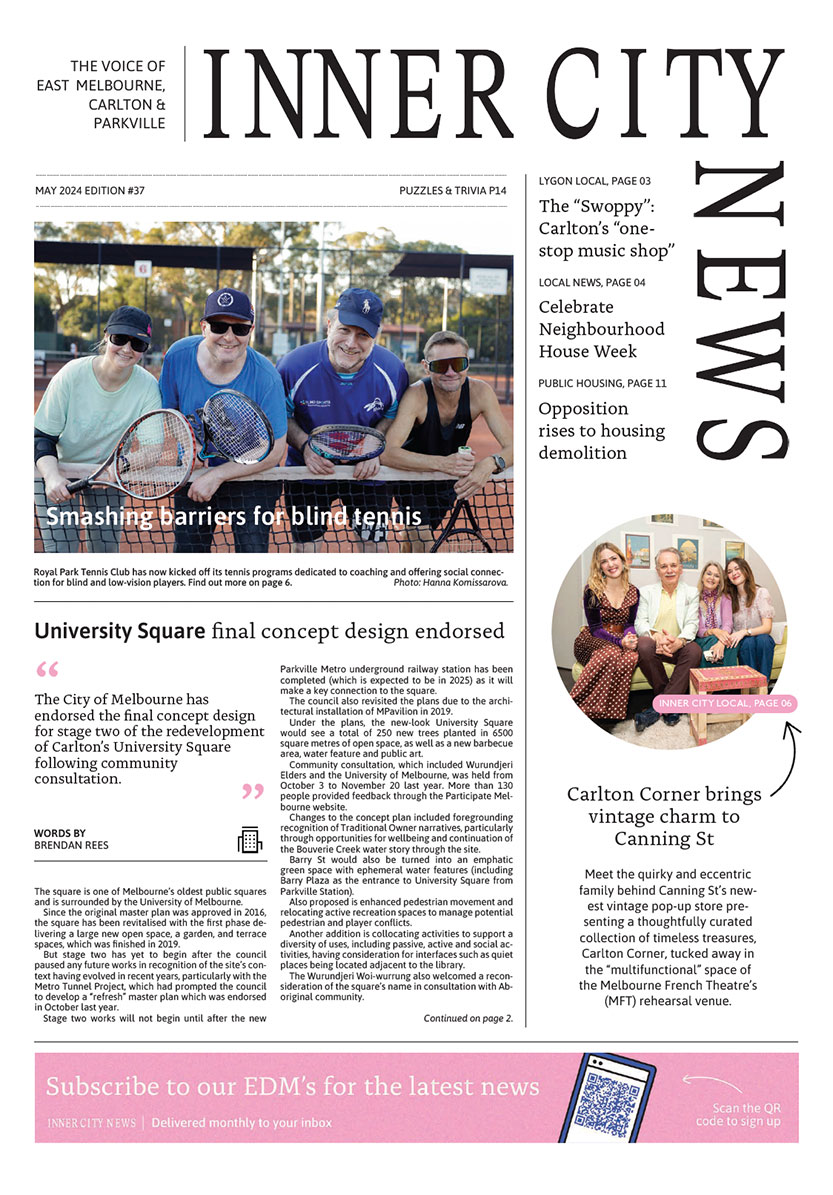Wildflowers bloom on Gatehouse St
Gatehouse St in Parkville is now home to a vibrant wildflower meadow after the City of Melbourne and Melbourne University planted one million seeds mid-last year.
The project was intended to trial six different types of garden beds to determine the best and most cost-effective way to plant indigenous flowers beneath existing trees and increase biodiversity.
University of Melbourne PhD candidate Katherine Horsfall said that she was pleased with the initial results of the trial.
“So far we’re very pleased with the diversity, the flowers have gone gangbusters and we’ve got all different types of insects and pollinators drawn to the space,” Ms Horsfall said.
“During spring and high summer, the flowers will really look their best amid the grassy matrix.”
So far there has been a few native flowers which have flourished particularly well under the canopy of eucalyptus trees, including a few critically endangered species.
They are part of the 27 indigenous grasses and wildflowers have been sown which were sown into six different types of garden bed.
“The real heroes of the site have been the sticky everlasting and tall daisy flowers and we’ve also seen 10 critically endangered species germinate which is very exciting,” Ms Horsfall said.
“From initial analysis we’ve also found that planting in deeper sand reduces the need to weed during the establishment phase.”
Ms Horsfall said that to keep the meadow healthy the team would soon be chopping down some of the biomass to allow space for the flowers to thrive.
“The kind of grassy woodland systems we’re basing this planting on usually rely on fire to reduce the biomass so the wildflowers can germinate in the space left,” Ms Horsfall said.
If you leave them alone you lose the species diversity, so we cut it down once a year to replicate the effect of fire.
The project is part of the City of Melbourne’s Nature in the City Strategy and includes trialling existing soil and two different sand depths, and garden beds with and without jute matting.
This trial, together with the council’s “Greening the City” initiative to plant 150,000 new trees, shrubs and grasses across the city, is intended to create more biodiversity within the City of Melbourne.
The next phase of the trial will occur at University of Melbourne and will trial different substrates to plant the flowers in.
Ms Horsfall said that it would take a few months for the final analysis to be completed but so far, the trial has been a success.
“We know from research that native understory plants are a sure-fire way to increase birds and other animals in our landscapes and there’s an appetite within the city to do that,” Ms Horsfall said.
“We’ve already seen an increase of native wildlife and insects on
the Gatehouse St portion of Royal Park.” •

Treasured First Nations artwork presented to the University of Melbourne








 Download the Latest Edition
Download the Latest Edition